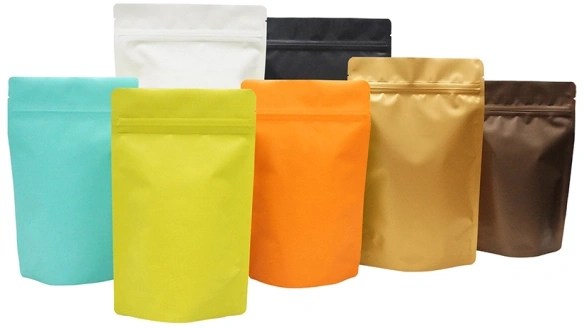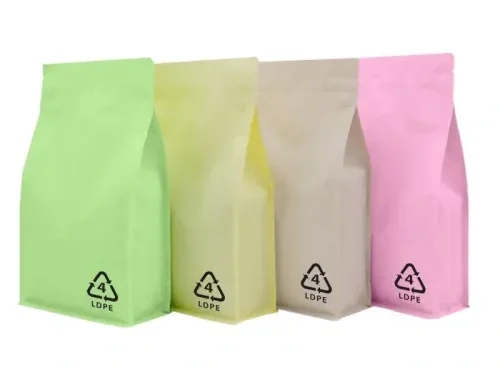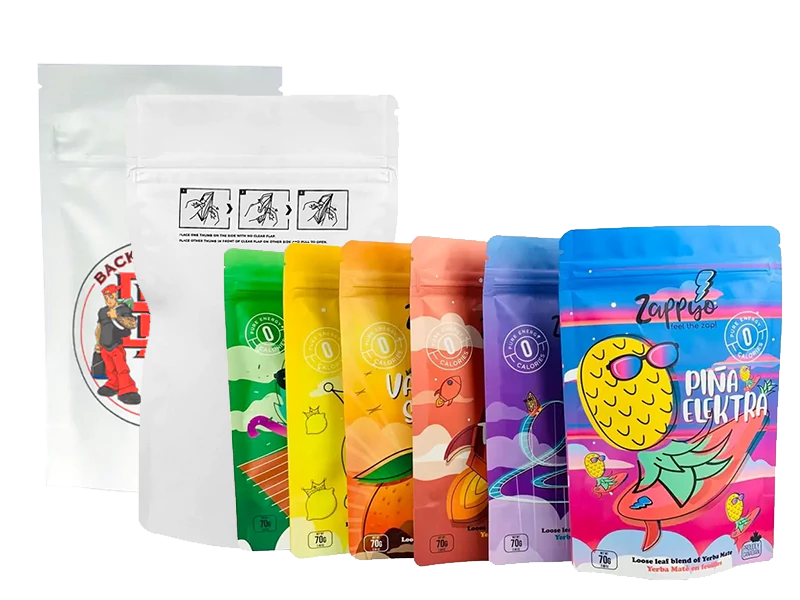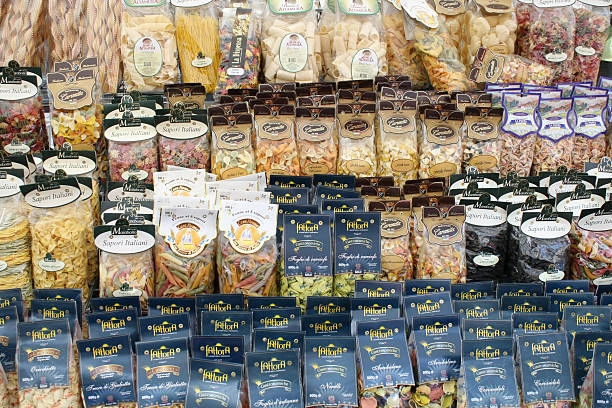As businesses and consumers increasingly focus on efficient and responsible packaging, understanding the diverse world of plastic bags is more critical than ever. We’re constantly encountering plastic bags in our daily lives, from grocery aisles to e-commerce deliveries, each engineered with specific properties for its intended purpose. But with so many options available, how do we navigate the complexities and make informed choices? In this ultimate guide, we’ll delve into the materials, forms, and features that define these versatile solutions, helping you unlock their full potential for your specific needs.
What Material Are Plastic Bags Made Of?
Here’s a table summarizing the materials plastic bags are made of:
| Material | Description | Common Uses |
|---|---|---|
| HDPE (High-Density Polyethylene) | Strong, durable plastic with resistance to impact and stress. Lightweight and cost-effective. | Grocery bags, heavy-duty bags. |
| LDPE (Low-Density Polyethylene) | Flexible and soft plastic, tear-resistant with a smooth texture. | Produce bags, small item packaging. |
| LLDPE (Linear Low-Density Polyethylene) | Stretchable, flexible, and strong. | Food packaging, industrial bags, protective layers. |
| MDPE (Medium-Density Polyethylene) | Combining the strength of HDPE and flexibility of LDPE. Resistant to stress cracking. | Retail packaging, shipping bags. |
| PP (Polypropylene) | Lightweight, strong, and resistant to high temperatures. Durable and chemical-resistant. | Combining strength of HDPE and flexibility of LDPE. Resistant to stress cracking. |
Common Types of Plastic Bags for Packaging
Beyond the raw material, the form and added features of plastic bags significantly impact their functionality and appeal. We utilize a variety of designs to suit different products and consumer experiences.
Stand-up Pouches

- Description: These flexible bags have a gusseted bottom that allows them to stand upright on shelves, maximizing shelf impact. They often incorporate zippers or spouts.
- Uses: We commonly see them for snacks, pet food, liquid products (sauces, beverages), coffee, dry goods, and even baby food.
- Benefits: Excellent shelf presence, often resealable, efficient use of material, and reduced transportation costs compared to rigid containers.
Flat Pouches (Lay-Flat Pouches)

- Description: Simple, two-dimensional bags sealed on all sides, designed to lay flat. They can be sealed on three or four sides.
- Uses: Ideal for single-serve portions of snacks, samples, medical devices, hardware, or small flat items like masks.
- Benefits: Cost-effective, simple to manufacture, excellent for product visibility, and highly versatile for various small items.
Gusseted Bags

- Description: Bags with expandable folds (gussets) on the sides or bottom, allowing them to expand when filled.
- Side Gusseted: The gussets are on the sides, creating a brick-like shape when filled.
- Bottom Gusseted: The gusset is at the bottom, enabling the bag to stand.
- Uses: Coffee bags, pet food, bulk grains, powdered mixes, or products that need extra volume. Bottom-gusseted bags can often stand up.
- Benefits: Increased filling volume, improved product-to-package ratio, and better stackability for storage.
Zipper Bags

- Description: Bags featuring a reclosable zipper mechanism, allowing consumers to open and reseal the package multiple times.
- Uses: Widely used for snacks, frozen foods, cheese, pet treats, coffee, and anything that needs to maintain freshness after initial opening.
- Benefits: Extends product freshness, prevents spills, enhances consumer convenience, and reduces food waste, often encouraging reuse of the bag itself.
Vacuum Seal Bags

- Description: Specifically designed to have air removed before sealing, creating a near-airless environment around the product. These are often multi-layered, incorporating PA or EVOH.
- Uses: Preserving perishable foods like meats, cheeses, and prepared meals; also for non-food items sensitive to oxidation or moisture.
- Benefits: Dramatically extends shelf life by inhibiting aerobic bacteria and preventing oxidation, protects against freezer burn, and reduces product volume.
Retort Bags (Retort Pouches)

- Description: Durable, multi-layered flexible pouches designed to withstand the high temperatures and pressures of the retort sterilization process (similar to canning).
- Uses: Ready-to-eat meals (MREs), pre-cooked foods, baby food, pet food, and long-shelf-life sauces.
- Benefits: Lightweight alternative to cans, faster heating/cooling for better food quality, and extended shelf stability without refrigeration.
Shrink Wrap and Stretch Film
While distinct, these are critical forms of plastic film packaging:
- Shrink Wrap: A polymer film that shrinks tightly around a product when heat is applied, creating a secure, often transparent, and tamper-evident package.
- Uses: Packaging individual items (e.g., software boxes, gift sets), bundling multiple items (e.g., multi-packs of beverages), and tamper-evident seals.
- Benefits: Provides product protection, enhances visual appeal, and offers tamper resistance.
- Stretch Film: A highly elastic plastic film (usually LLDPE) wrapped around items, often pallets, to hold them together and protect them during transit. It’s stretched and wrapped tightly without heat.
- Uses: Palletizing goods for shipping, securing irregularly shaped items.
- Benefits: Excellent load containment, protection from dust and moisture, and cost-effective bulk packaging.
Bags-on-a-Roll
- Description: Individual plastic bags are perforated and wound onto a roll for easy dispensing.
- Uses: Common in grocery stores for produce, bakery items, or small bulk goods; also used in industrial settings for small parts or components.
- Benefits: Convenience for high-volume dispensing, improved organization, and ease of use in retail or production environments.
Choosing the Right Plastic Bag for Your Needs
Selecting the ideal plastic bag for your product is a critical decision that impacts shelf life, brand perception, cost, and environmental footprint. We consider several key factors to make the most informed choice:
Cost-Effectiveness: Budget is always a factor. Balance material cost with performance requirements, transportation savings, and potential for extended shelf life, reducing waste.
Product Compatibility: What are you packaging?
Food: Requires food-grade materials, often with specific barrier properties. Is it dry, liquid, oily, or acidic? Does it need to be microwavable or retortable?
Non-Food: Chemicals, hardware, textiles, medical devices—each has unique requirements for strength, chemical resistance, or sterilization.
Barrier Properties: How much protection does your product need from external elements?
Oxygen Barrier: Crucial for oxygen-sensitive foods (e.g., coffee, processed meats) to prevent spoilage and maintain freshness. Materials like EVOH, PA, and PET offer excellent oxygen barriers.
Moisture Barrier: Essential for products that need to stay dry (e.g., snacks, powders) or retain moisture (e.g., fresh produce). PE and PP provide good moisture barriers.
UV Light Protection: Some products are sensitive to light degradation, requiring opaque or UV-blocking layers.
Strength and Durability: How will the bag be handled?
Puncture Resistance: Important for sharp or irregularly shaped items (e.g., hardware, bones in meat). PA and LLDPE are excellent for this.
Tear Strength: Needed for heavy items or bags that will undergo stress. HDPE and LLDPE offer good tear resistance.
Tensile Strength: The ability to withstand pulling forces without breaking.
Sealing Requirements: How will the bag be sealed?
Most plastic bags are heat-sealed. Ensure the material is compatible with your sealing equipment (e.g., impulse sealers, band sealers, vacuum sealers).
Does it need to be resealable (e.g., zipper, slider)?
Sustainability Goals: What are your environmental objectives?
Recyclability: Can the bag be recycled? Monomaterial designs (e.g., all PE) are easier to recycle. Consider local recycling infrastructure.
Biodegradability/Compostability: Is a certified compostable option (PLA, PHA) feasible given available composting facilities and product shelf life?
Recycled Content: Can the bag be made with Post-Consumer Recycled (PCR) content?
Lightweighting: Can a thinner gauge material still meet performance requirements?
FAQ
What Type of Plastic Are Grocery Bags?
Grocery bags are typically made from HDPE (High-Density Polyethylene). This plastic is lightweight, durable, and resistant to tearing, making it ideal for carrying groceries.
What Type of Plastic Are Plastic Bags?
Plastic bags are usually made from HDPE, LDPE (Low-Density Polyethylene), or LLDPE (Linear Low-Density Polyethylene). Each type varies in strength, flexibility, and stretchability.
What Type of Plastic Are Ziploc Bags?
Ziploc bags are made from LDPE (Low-Density Polyethylene). This material is flexible, strong, and tear-resistant, making it ideal for resealable storage.
What Type of Plastic Bag Cannot Be Recycled?
Plastic bags made from mixed materials, like chip bags, or bags with thick coatings, typically cannot be recycled. Always check with your local recycling program for guidelines.
What Type of Plastic Bags Are Recyclable?
Plastic bags made from HDPE and LDPE are generally recyclable. However, always check local recycling rules to confirm which types are accepted in your area.
What Type of Plastic Are Chip Bags?
Chip bags are typically made from a combination of materials, including metalized polyester and plastic. This layered structure helps keep the chips fresh but makes recycling difficult.
What Type of Plastic Are Ziploc Bags Made Of?
Ziploc bags are made of LDPE (Low-Density Polyethylene), a flexible, tear-resistant plastic that allows for easy sealing and resealing.
What Type of Plastic is Used for Grocery Bags?
Grocery bags are usually made from HDPE (High-Density Polyethylene). This plastic is lightweight, strong, and perfect for carrying groceries safely.
Is it Expensive to Make Plastic Bags?
Plastic bags are generally inexpensive to produce, especially when made from HDPE or LDPE. The cost can vary depending on the size, material, and custom features, but they remain an affordable packaging option.
